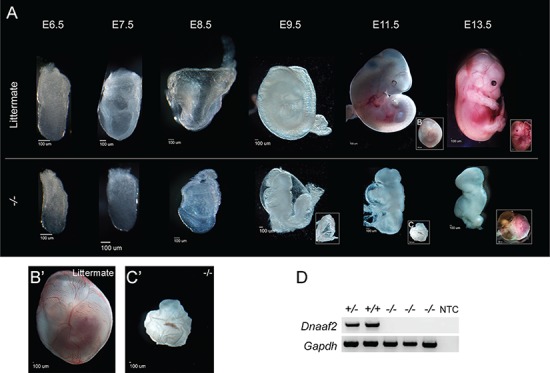Figure 2.

Dnaaf2 −/− mouse embryos are delayed in development when compared to littermate. Embryos were collected at the indicated embryonic day (E). The lower panel denotes the embryo lacking both copies of the Dnaaf2 allele, and the upper panel denotes their respective wild-type or heterozygous littermates (A). Dnaaf2−/− embryos are delayed in development and do not proceed through the turning of the embryos. Particularly, the E11.5 yolk sac vasculature of the Dnaaf2−/− embryo is dramatically different from its littermate (B, B′, C and C′). No Dnaaf2 homozygous mutant embryos are recovered at time of delivery. RT-PCR result verifies that the mutant embryos do not contain the Dnaaf2 alleles (D). B′ and C′ are magnified views of B and C. Gapdh is used as a loading control. NTC denotes no template control; +/+ denotes wild-type embryo; +/− denotes Dnaaf2 heterozygous embryo; −/− denotes Dnaaf2 mutant embryo. Scale bar for each image is included below each embryo.
